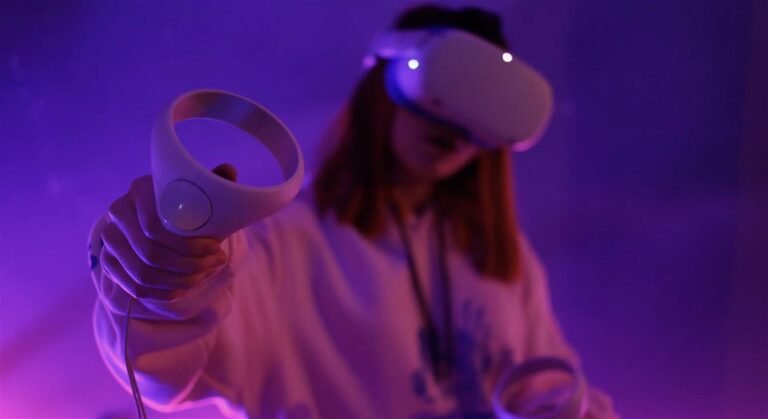Researchers from the University of Malaga (UM) have exploited the ability to create a “phantom sensation,” or the sensation of being touched, on parts of the body that are not in actual physical contact with each other. The researchers behind this discovery say they have also determined the operating parameters and effective stimulation distance to create the phantom sensation, which could help perfect the process.
In the future, the ability to create and localize customized phantom sensations could lead to applications such as helping the blind, such as “feeling” music. The team also sees potential commercial applications, such as haptic vests and stimulus-responsive controllers that can create immersive tactile sensations while playing video games.
Two vibration actuators work together to create hallucinatory sensations
According to a press release announcing the research, the best way to create a hallucinated sensation is to stimulate nerves in a way that creates a “tactile illusion that does not correspond to a real physical stimulus.” This is achieved by strategically placing two vibrating actuators on the skin at a specific distance from one another. When activated in the right way, the combined activity of these actuators can create a hallucinated sensation in parts of the body with which there is no physical contact.
“With the right stimulation, rather than perceiving two independent vibrations, a person can experience the sensation of a moving vibration point between the two devices. This point does not actually exist, it is an illusion,” explained Andres Trujillo, a professor in the Department of Electrical Engineering and lead author of a paper outlining the team’s work.
Previous studies have highlighted the effects of phantom sensations, but their operating parameters were not clearly defined: researchers knew how to create phantom sensations, but didn’t know how far apart the vibrating actuators needed to be, or where exactly to place them, to create a specific, desired tactile sensation somewhere else on the body.
Setting parameters for a non-existent touch
To set parameters that would broaden the possibilities for real-world applications of the hallucinated sensations, the team says they studied the minimum amplitude of movement at which an individual perceives a tactile illusion, the clarity of the hallucinated sensation perceived by each subject, and how continuity of movement helps sustain the sensation.
According to the published study, in their experiment, two actuators were placed on the skin at a certain distance apart — if the actuators were closer than this, the hallucination didn’t occur. The researchers then increased the vibration intensity of one actuator and decreased the vibration intensity of the other actuator.
“We gradually increased the amplitude of the movements until subjects reported that they perceived the illusion,” they wrote in the journal Neuroscience. screen“This change in intensity creates the illusion of a vibration point moving between the actuators.”
To test the duration of the sensation, the team tried different stimulus durations, ranging from one-tenth of a second to six seconds, and found that subjects perceived the hallucinated sensation to occur when the amplitude of the movement was around 20%, increasing up to 100%.
Notably, the clarity of the sensation was often low (described as “not very clear”); however, as the amplitude of the vibration actuators was moved farther and farther apart, the clarity of the sensation increased. The researchers also found that there was a “positive correlation between the duration and continuity of the motion.” Indeed, periodically moving the vibration source made the hallucinated sensation last longer.
Trujillo said his team’s work has not only identified the mechanism that controls the hallucinatory sensation, but also established the operational parameters needed to apply it in a targeted way. “We developed an instruction manual for the operational limits of this tactile illusion,” he said.
Applications include VR, gaming and devices for the visually impaired.
The professor also noted that the discovery, which expands on the theory of transmitting the sensation of music through the skin of deaf people, could potentially lead to the creation of customized vests or other skin coverings with large numbers of vibrating actuators placed in strategic locations. When activated in a specific order or sequence, such a device could apply the team’s findings to create customized phantom sensations of different intensity, duration and location, depending on which actuators are activated at a given time.


“In traditional applications, you would have not just two actuators, but a series of actuators, and you would systematically switch them on and off to create the sensation of movement,” Trujillo explains.
While the team isn’t yet ready to develop a commercial product, they say their research has a variety of potential applications. For example, visitors to an immersive virtual reality world could experience the physical sensation of touch when they encounter a particular object or obstacle. The method could also be applied to industrial or military training scenarios, where feedback sensations could better prepare people to work in dangerous or high-stress situations.
The team also said: “Haptic vests, video games, touch screens for the blind, and concerts are other applications of these illusory or apparent movements, providing users with a sense of realism and new sensations.”
Christopher Plain is a science fiction and fantasy novelist and lead science writer at The Debrief. Follow and connect with him: X, Find out about his books at plainfiction.com or email him directly at christopher@thedebrief.org.


